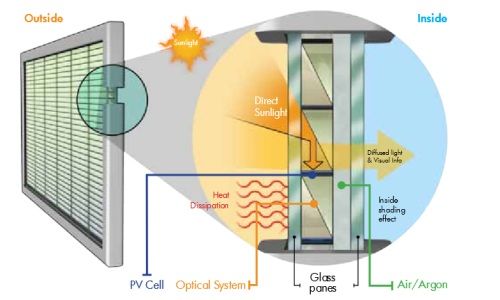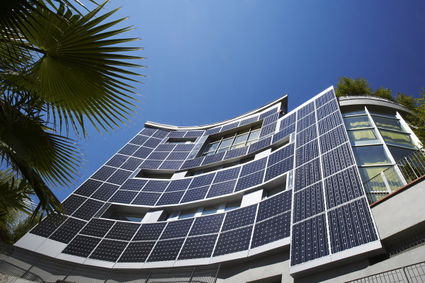Written by Jack Garraty | Published on July 15th, 2020
Building-Integrated Photovoltaics & New Construction Overview:
- Building-Integrated Photovoltaic systems incorporate traditional Solar PV systems with building designs.
- Although BIPV systems can be more expensive than traditional ground-mounted PV systems, BIPV systems offer many more advantages for projects.
- The BIPV market is growing substantially and is being adopted by commercial sectors all over the country.
Commercial photovoltaics are one of the most promising new renewable energy technologies today. Traditionally, solar PV systems are mounted on a building’s roof or ground-mounted on an open, unshaded plot of land. However, there is another form of solar installation that is becoming more popular in the commercial sector – building-integrated photovoltaics.

Source: Solar Power World
What is a BIPV System?
Also known as BIPV, building-integrated photovoltaics transform traditional PV systems into vital assets for a building’s exterior structure. A BIPV System consists of integrating photovoltaic modules into the building envelope (such as a roof or facade). By simultaneously serving as both building materials and as power generators, BIPV systems can be more cost-efficient for commercial businesses by providing savings on materials and electricity costs, while reducing the use of fossil fuels and adding architectural interest to the building. BIPV systems are usually interfaced with available utility grids, but may also be used in off-grid systems.
Examples of BIPV include:
– Solar cells can be incorporated into the facade of a building, complementing or replacing traditional view glass. These installations are often vertical. While this reduces access to available solar resources, (due to a less than optimal tilt angle), large surface areas of buildings can help compensate for the reduced power.
– PV may be incorporated into awnings and saw-tooth designs on a building facade. These will increase access to direct sunlight while providing additional architectural benefits such as passive shading.
– The use of PV in roofing systems can provide a direct replacement for batten and seam metal roofing, as well as traditional three-tab asphalt shingles.
– Using PV for skylight systems can be an economical use of energy and an exciting design feature.
Source: World of Renewables
What is the outlook for the BIPV market?
According to solar market researchers, “the global market for building-integrated photovoltaics will grow by an average of 15 percent annually to a volume of around seven billion US dollars by 2024.”¹ PV specialists continue to explore creative ways of incorporating solar electricity into their projects and designs.
Although BIPV is still a niche market, architects are more frequently implementing BIPV elements into their designs of commercial buildings. According to recent market research, “The global building-integrated photovoltaics market size is expected to reach USD 36.74 billion by 2025 […] It is projected to expand at a CAGR [Compound Annual Growth Rate] of 18.8% from 2019 to 2025.”²
If you are interested in learning more about BIPV systems and the opportunities Capital Solar Group offers, our solar experts are here to help. Our financial team will ensure that projects will be beneficial to your company and will provide transparent analysis on project site capabilities, capital requirements, and federal tax incentives relating to your individual company needs.
- “Building-integrated Photovoltaics Market Size: Industry Report, 2025.” Grand Review Research. https://www.grandviewresearch.com/industry-analysis/building-integrated-photovoltaics-bipv-market.
2. “Global BIPV Market to Grow by 15 Percent Every Year.” PV Europe. June 16, 2020. https://www.pveurope.eu/installation/global-bipv-market-grow-15-percent-every-year.




